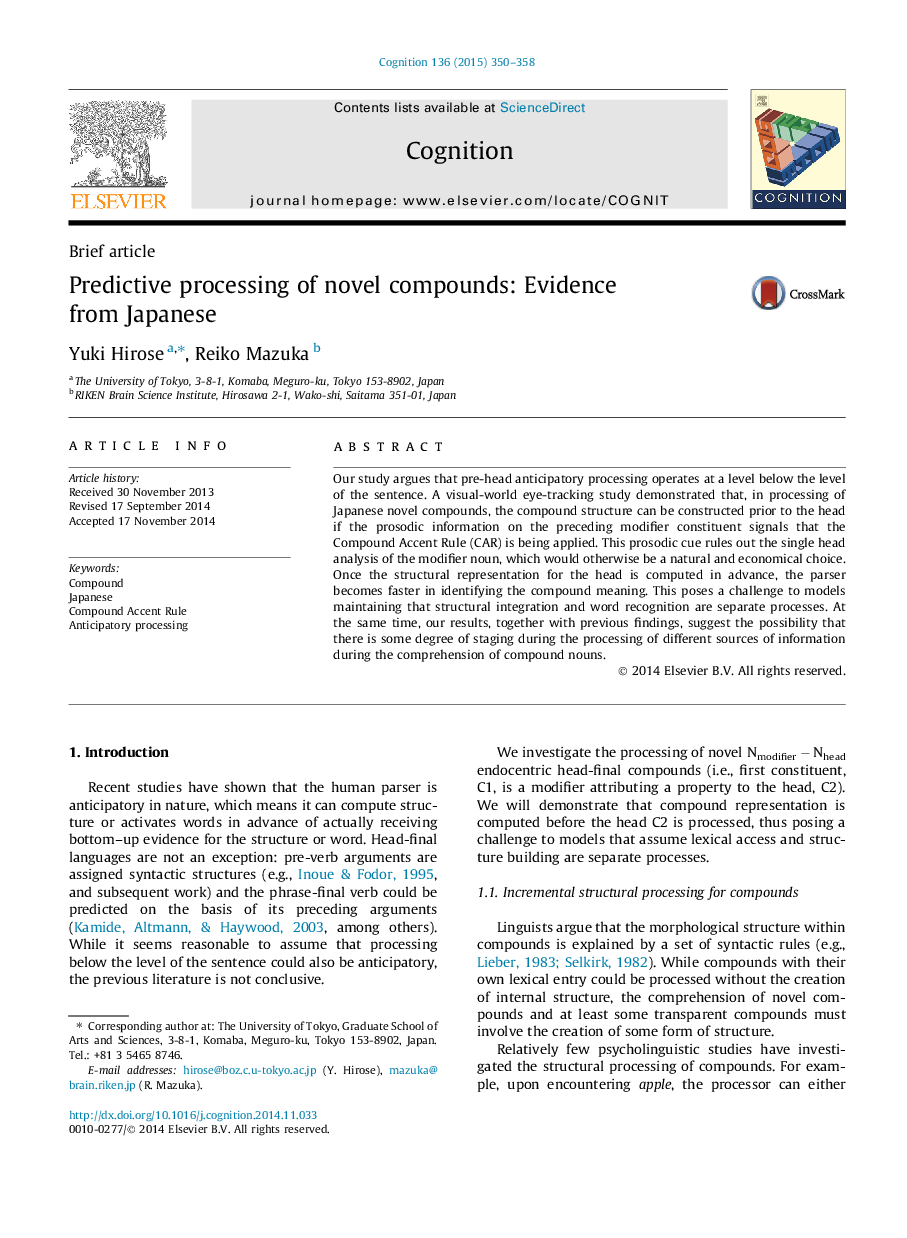| Article ID | Journal | Published Year | Pages | File Type |
|---|---|---|---|---|
| 7287480 | Cognition | 2015 | 9 Pages |
Abstract
Our study argues that pre-head anticipatory processing operates at a level below the level of the sentence. A visual-world eye-tracking study demonstrated that, in processing of Japanese novel compounds, the compound structure can be constructed prior to the head if the prosodic information on the preceding modifier constituent signals that the Compound Accent Rule (CAR) is being applied. This prosodic cue rules out the single head analysis of the modifier noun, which would otherwise be a natural and economical choice. Once the structural representation for the head is computed in advance, the parser becomes faster in identifying the compound meaning. This poses a challenge to models maintaining that structural integration and word recognition are separate processes. At the same time, our results, together with previous findings, suggest the possibility that there is some degree of staging during the processing of different sources of information during the comprehension of compound nouns.
Related Topics
Life Sciences
Neuroscience
Cognitive Neuroscience
Authors
Yuki Hirose, Reiko Mazuka,
